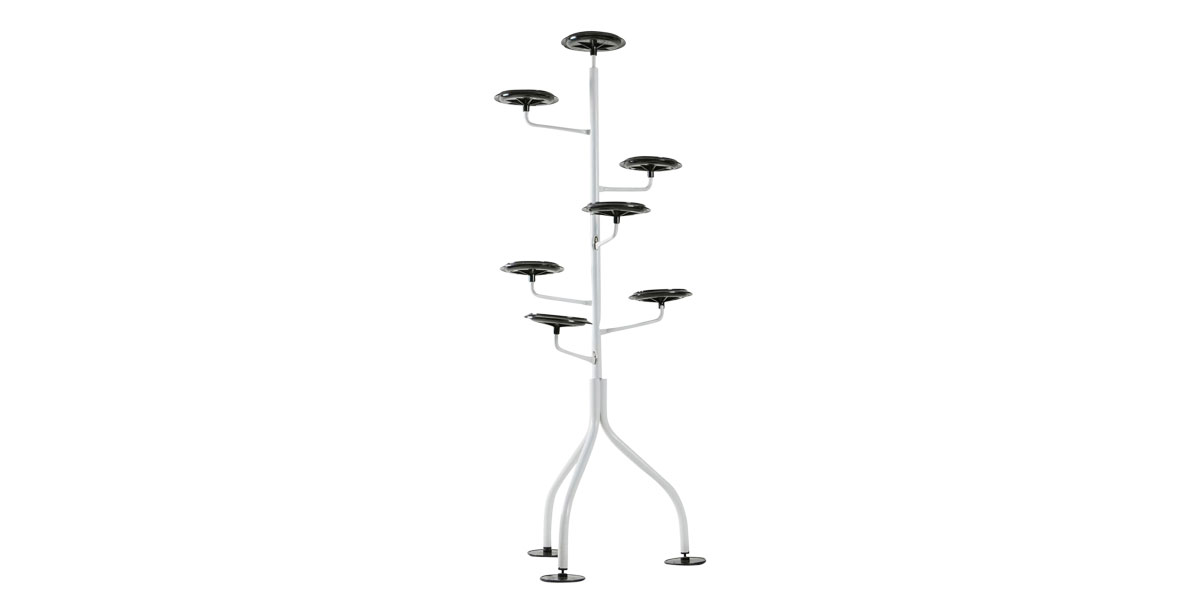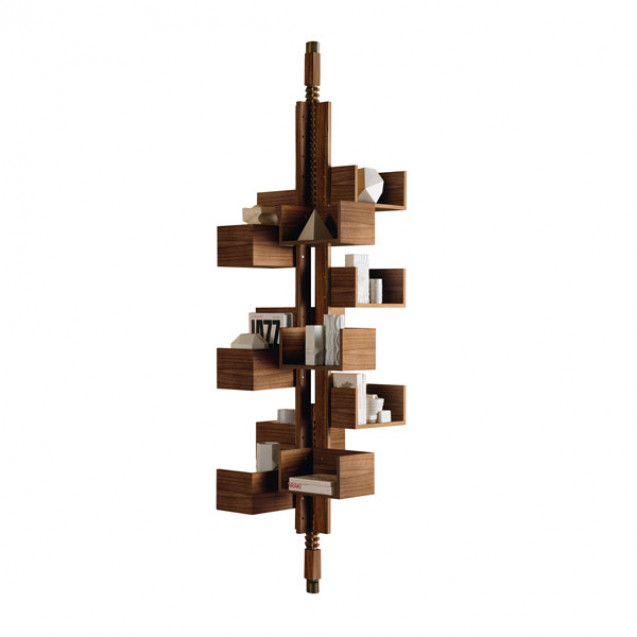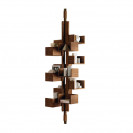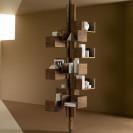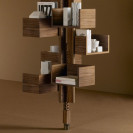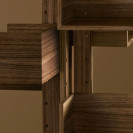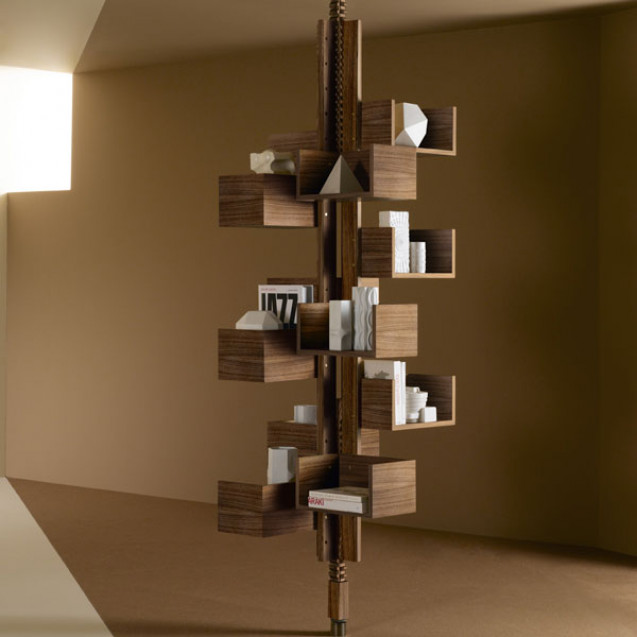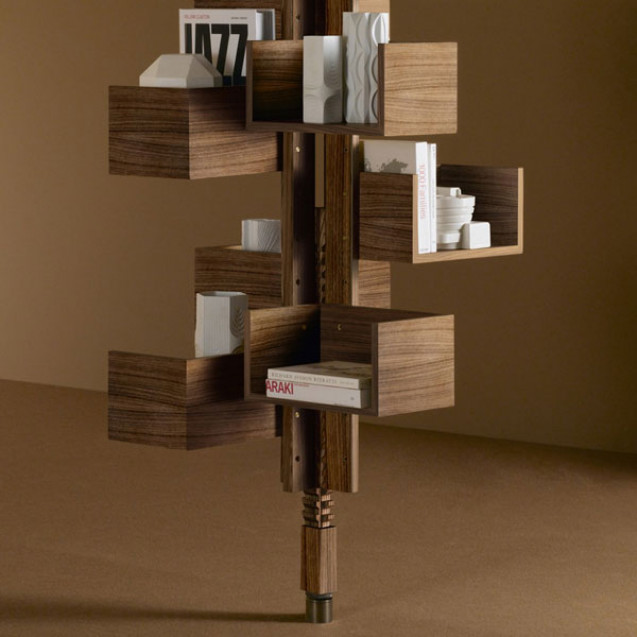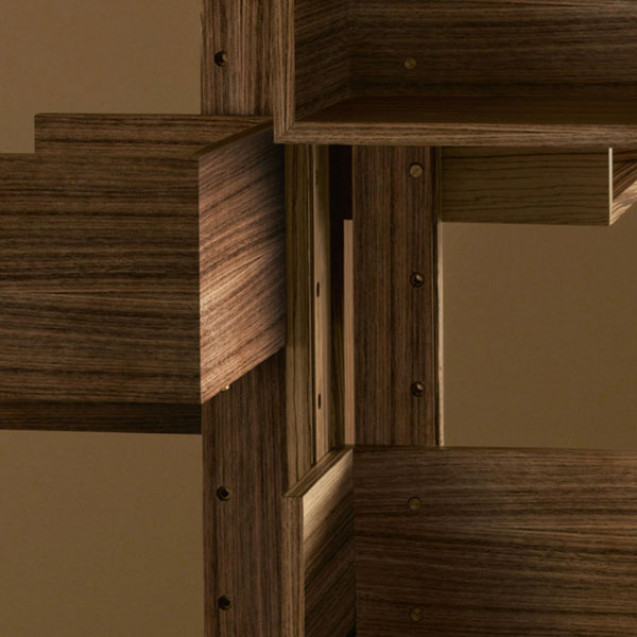Albero
Conceived in the late 1950s as a floor-to-ceiling free-standing bookcase, "Albero" was designed for use in interior settings rather than for serial production.
The "Albero" is formally associated with the Neoliberty period and, in terms of product type, to the floor-to-ceiling bookcase systems that were popular throughout the 50s and 60s. Designed by Frattini, the structure stands out both for its complex cabinet work and for its sculpted nature, acting as the centrepiece of a room.
Supporting frame in solid Canaletto walnut veneer with special rack and pinion joint and shelves in MDF with Canaletto veneer. Iron caps, on the ceiling and ground, finished with textured, wrinkled-effect black paint. A metal “cup” is attached to the ceiling inside which is inserted a steel anchor bolt with adjustable metal ferrules. On the ground it is held in place by an anti-slip rubber foot. The system has a 360° swivel mechanism. Any number of shelves from 8 to 12 can be fitted thanks to the holes in the uprights.
Albero has been mentioned in "The Top 10 Moments at Milan Design Week" of The New York Times.
| About Designer | |
|---|---|
Gianfranco Frattini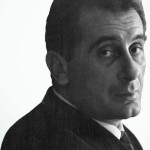 |
Gianfranco Frattini was born in Padua on 15 May 1926. He graduated from Milan Polytechnic with a degree in Architecture in 1953 and joined GioPonti's studio. As early as 1954, thanks to Ponti, he began working with Cesare Cassina, who would always remain an important figurehead for him. He was one of the founders of ADI and was involved in the management of the Triennale di Milano on several occasions. He opened his own design studio, initially with Franco Bettonica, in Via Lanzone, Milan. He worked with numerous companies in the field of furniture and lighting design including Bernini, Arteluce, Knoll and Artemide, for whom he and Livio Castiglioni designed the “Boalum” floor lamp, a true masterpiece and, above all else, an innovation in terms of product type. Frattini's relationship with PierluigiGhianda, a cabinet maker from BovisioMasciago, was also extremely important. Beyond the human aspect, this relationship exemplified his passion for working at close quarters with craftsmen, always attentive to the quality of manufacturing and the design stories. Wood was without doubt Frattini's preferred material. Some of his interior designs, another professional field in which Frattini has left a significant legacy, formed the backdrop for several of Milan's trendiest social venues in the early 1960s, particularly the Stork Club and the St. Andrews restaurant. His designs in Portofino, Capri and the interiors of the Hilton hotel in Tokyo are also particularly memorable. His work was referenced at the Compassod’Oro awards numerous times, and he was also a winner of the Triennale di Milano Medaglie and Gran Premio awards. Domus magazine regularly published his work. In 1988 Pier Carlo Santini dedicated an important monograph to him. Gianfranco Frattini died in Milan on 6 April 2004. In 2007 Giuliana Gramigna and Federica Monetti wrote Gianfranco Frattini: architettod’interni e designer (Gianfranco Frattini: interior architect and designer) for Franco Angeli. His products are displayed in the permanent collections of the biggest design and decorative art museums in the world. |
